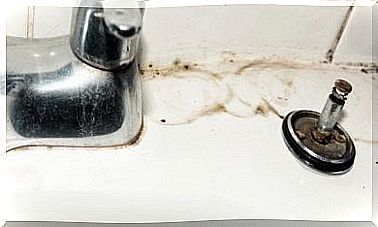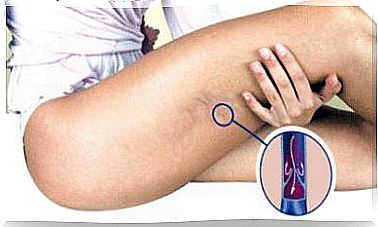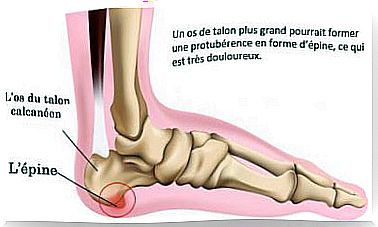5 Tips For Relieving Swollen Ankles
Swelling of the ankles can be caused by several causes. Although some of them require medical treatment, this problem can usually be improved with some home care. Here are our tips!
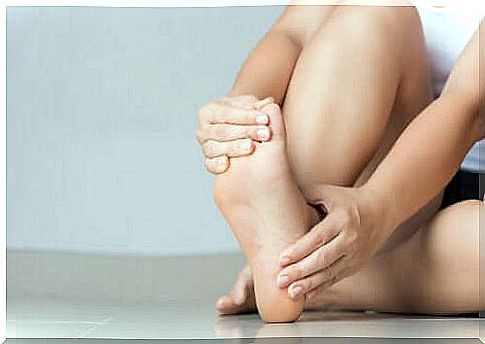
Treatment for swollen ankles depends on its cause. If the injuries involve the ligaments or there is an inability to move, your best bet is to see a doctor. On the other hand, if it is a mild injury or the cause is fluid retention, just follow a few tips to relieve swollen ankles.
This symptom often affects the elderly and pregnant women. Nevertheless, it is also common in athletes and people whose work involves physical exertion. Although it can be associated with circulatory difficulties, trauma and infections, it is almost always not serious and can be improved with basic care. Take note !
5 tips to relieve swollen ankles
Before putting our tips for relieving swollen ankles into practice, it’s important to determine the severity of the symptom. If it is transient swelling, such as unchanged posture or fluid buildup, a few exercises and care may be sufficient.
If, on the other hand, the symptom is persistent or accompanied by pain, bruising and difficulty walking, it is essential to see your doctor for proper treatment. The healthcare professional can determine the type of injury through auscultation and tests such as an x-ray of the ankle. Let’s see some tips to alleviate this problem.
1. Lift the legs

One of the exercises that helps relieve swollen ankles is lifting the legs up against a wall. This movement facilitates circulation from the lower extremities to the heart. This helps reduce inflammation. There is then a rapid sensation of relief in the event of pain or numbness.
What should you do ?
-
- Lie down on a comfortable surface, such as the bed or a yoga mat. Lift the feet towards the ceiling.
- Hold them in this position for 10 to 15 minutes and release. You can lean the legs against the wall to make the exercise easier.
2. Exercise moderately
Moderate physical exercise has therapeutic effects on injuries that lead to inflammation in the ankles. In fact, it is one of the best habits to rekindle blood circulation and prevent fluid retention. The World Health Organization (WHO) recommends 150 minutes of moderate exercise each week.
What should you do ?
- If you have an ankle injury, consult your doctor or physiotherapist to advise you on the appropriate exercises for your rehabilitation.
- Avoid sessions that are too intense until you have healed completely.
- Prefer moderate activities like walking, swimming or stretching with an elastic band.
3. Rest to relieve swollen ankles
Moderate exercise certainly helps relieve swollen ankles. But it is also important to rest for a few days. Rest decreases the pressure caused by the weight of the body on the ankles. In addition, it helps in muscle relaxation. Finally, it promotes the recovery of affected tissues.
What should you do ?
- If you have recently suffered from an injury or sprained ankle, rest for 2 or 3 days.
- If you feel pain when putting your foot down, use crutches.
4. Apply ice
Applying ice can be very helpful in treating ankle swelling. The cold has a therapeutic effect which helps reduce inflammation. Its application through massages accelerates the relief of pain, bruises and muscle spasms.
What should you do ?
- Place several ice cubes in a bag or in a clean cloth.
- Then perform light massages on the ankles.
- Leave on until you feel the skin numb. Then let 2 to 4 hours pass before repeating the operation.
- Continue the treatment for 3 to 4 days until the swelling is controlled.
5. Use a bandage
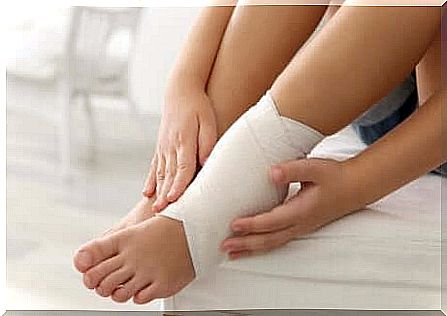
Bandaging the affected ankle may be the best supplement to decrease swelling and the appearance of bruising. Before that, one can apply anti-inflammatory cream or oils. The ideal is to keep the band on for at least 2 days, depending on the severity of the swelling.
What should you do ?
- First, cut out a piece of compress in the shape of a horseshoe.
- Then put it around the outer part of the ankle.
- Wrap it with an elastic band without tightening the ankle too much.
- If you have any doubts about the bandage, consult your doctor. The tape should not block traffic. Indeed, it could worsen the situation.
Finally, don’t forget to improve your diet and avoid excessive salt intake. This can interfere with processing. Indeed, it has an influence on the retention of liquids. Also drink plenty of water and avoid bad habits such as drinking alcohol and smoking.




